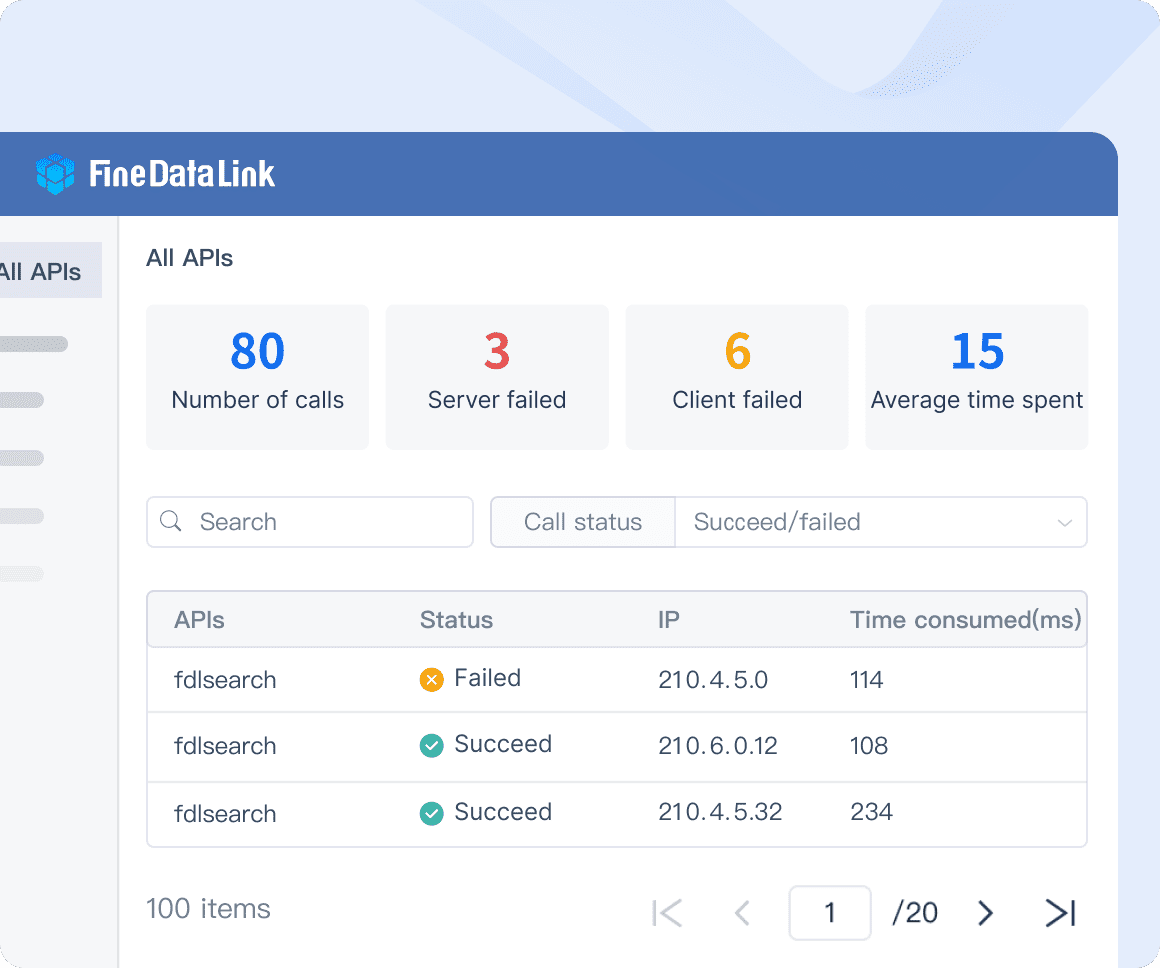Enterprise data integration involves merging data from multiple sources to create a unified view. Modern enterprises rely on this process to enhance decision-making and operational efficiency. A poll conducted by Bullhorn, Inc. revealed that 55% of businesses increased their income in 2021 due to effective data integration. Additionally, 64% saw improved employment fill rates. Forbes research indicates that 80% of Business Operations leaders consider data integration critical to success. In this blog, we will delve into the intricacies of enterprise data integration, exploring its definition, types, methods and the best practices.
Understanding Enterprise Data Integration
Key Concepts and Definitions
Data Sources
Enterprise data integration involves various data sources. These sources include databases, cloud storage, and on-premises systems. Each source provides unique data sets essential for comprehensive analysis. Identifying and categorizing these sources ensures effective integration.
Data Integration Techniques
Several techniques exist for enterprise data integration. Common methods include ETL (Extract, Transform, Load), ELT (Extract, Load, Transform), and data virtualization. ETL processes data before loading it into a target system, While ELT loads data first and then transforms it. Data virtualization offers real-time access to data without physical movement. Each technique serves different needs based on organizational requirements.
Data Consistency and Quality
Maintaining data consistency and quality is crucial in enterprise data integration. Consistent data ensures uniformity across all systems. High-quality data enhances decision-making and operational efficiency. Implementing validation rules and regular audits helps maintain data integrity.
Types of Data Integration
Manual Data Integration
Manual data integration involves human intervention. Employees manually collect and merge data from different sources. This method suits small-scale projects but can be time-consuming and error-prone for larger datasets.
Middleware Data Integration
Middleware acts as an intermediary between applications. It facilitates communication and data exchange. Middleware solutions streamline enterprise data integration by automating data flows and reducing manual efforts.
Application-Based Integration
Application-based integration uses software applications to connect different systems. These applications enable seamless data transfer and synchronization. This method supports real-time data updates and enhances system interoperability.
Uniform Data Access
Uniform data access provides a consistent interface for accessing data. It abstracts the underlying data sources, offering a unified view. This approach simplifies enterprise data integration by standardizing data retrieval processes.
Common Data Storage
Common data storage consolidates data into a single repository. This method centralizes data management and improves accessibility. Organizations often use data warehouses or data lakes for this purpose. Centralized storage supports comprehensive data analysis and reporting.
Methods of Data Integration

ETL (Extract, Transform, Load)
Overview of ETL Process
The ETL process involves three primary steps: extraction, transformation, and loading. Extraction pulls data from various sources. Transformation converts the data into a suitable format. Loading transfers the transformed data into a target system. This method supports enterprise data integration by ensuring data consistency and quality.
Benefits of ETL
ETL offers several benefits for enterprise data integration:
- Improved Data Quality: The transformation step ensures data accuracy and consistency.
- Centralized Data Management: Consolidates data from multiple sources into a single repository.
- Enhanced Decision-Making: Provides clean and reliable data for analysis.
Challenges of ETL
Despite its benefits, ETL faces several challenges:
- Complexity: The process can be intricate and time-consuming.
- Resource Intensive: Requires significant computational resources.
- Latency: Real-time data access is limited due to batch processing.
Data Virtualization
Overview of Data Virtualization
Data virtualization creates a virtual layer that provides real-time access to data without physical movement. This method integrates data from various sources, offering a unified view. Data virtualization enhances enterprise data integration by simplifying data access and reducing latency.
Benefits of Data Virtualization
Data virtualization offers several advantages:
- Real-Time Access: Provides immediate access to data for analysis.
- Reduced Data Movement: Minimizes the need for physical data transfers.
- Enhanced Flexibility: Adapts to changing data sources and requirements.
Challenges of Data Virtualization
Data virtualization also presents some challenges:
- Performance Issues: Real-time access can strain system resources.
- Complex Configuration: Requires careful setup and management.
- Data Security: Ensuring data security across virtual layers can be challenging.
Data Replication
Overview of Data Replication
Data replication involves copying data from one location to another. This method ensures data availability and redundancy. Data replication supports enterprise data integration by providing consistent data across multiple systems.
Benefits of Data Replication
Data replication offers several benefits:
- Data Redundancy: Ensures data availability in case of system failures.
- Consistency: Maintains uniform data across different locations.
- Scalability: Supports growing data needs by replicating data to additional systems.
Challenges of Data Replication
Data replication faces several challenges:
- Storage Requirements: Requires significant storage capacity.
- Network Bandwidth: High data transfer rates can strain network resources.
- Synchronization Issues: Ensuring data consistency across replicas can be complex.
To make use of these methods well and complete data integration better, you can use FineDataLink for free!
Benefits of Enterprise Data Integration
Improved Data Quality
Consistency
Enterprise data integration ensures data consistency across all systems. Consistent data provides uniform information, which helps in maintaining accurate records. This uniformity reduces discrepancies and errors in data reporting.
Accuracy
Accurate data is crucial for decision-making. Enterprise data integration enhances data accuracy by consolidating information from various sources. This process eliminates duplicate entries and incorrect data, resulting in reliable datasets.
Enhanced Decision Making
Real-time Data Access
Real-time data access is vital for timely decision-making. Enterprise data integration enables organizations to access up-to-date information instantly. This capability supports quick responses to market changes and operational needs.
Comprehensive Data Analysis
Comprehensive data analysis becomes possible with integrated data. Enterprise data integration combines data from multiple sources, providing a holistic view. This unified perspective allows for in-depth analysis and better insights into business operations.
Operational Efficiency
Streamlined Processes
Streamlined processes result from effective enterprise data integration. Integration automates data flows between systems, reducing manual intervention. This automation speeds up workflows and minimizes the risk of human error.
Reduced Redundancy
Reducing redundancy is another benefit of enterprise data integration. Integrated systems prevent duplicate data entries, ensuring that each piece of information exists only once. This reduction in redundancy saves storage space and improves data management efficiency.
Challenges in Data Integration
Data Silos
Identification of Data Silos
Enterprise data integration often encounters data silos. These silos occur when departments or systems store data independently. Identifying data silos requires a thorough audit of data sources. Organizations must map out where data resides and how it flows. This process helps uncover isolated data pockets that hinder integration efforts.
Strategies to Overcome Data Silos
Overcoming data silos involves several strategies. Implementing centralized data repositories can consolidate disparate data sources. Middleware solutions facilitate communication between systems, breaking down barriers. Regular cross-departmental meetings ensure alignment on data management practices. These strategies promote seamless enterprise data integration.
Data Security and Privacy
Ensuring Data Security
Data security remains a critical concern in enterprise data integration. Organizations must implement robust security measures to protect sensitive information. Encryption techniques safeguard data during transfer and storage. Access controls restrict data access to authorized personnel only. Regular security audits identify vulnerabilities and ensure compliance with best practices.
Compliance with Regulations
Compliance with data privacy regulations is essential for enterprise data integration. Laws such as GDPR and CCPA mandate strict data handling practices. Organizations must establish policies that align with these regulations. Regular training sessions keep employees informed about compliance requirements. Adhering to these laws protects organizations from legal repercussions.
Data Quality Issues
Identifying Data Quality Problems
Data quality issues pose significant challenges to enterprise data integration. Inconsistent data formats and duplicate entries undermine data integrity. Organizations must conduct regular data quality assessments. These assessments identify inaccuracies and inconsistencies in datasets. Automated tools can streamline the identification process, ensuring comprehensive coverage.
Solutions for Data Quality Improvement
Improving data quality requires a multifaceted approach. Standardizing data formats across systems enhances consistency. Data cleansing tools remove duplicates and correct errors. Implementing validation rules during data entry prevents future quality issues. Continuous monitoring ensures ongoing data quality, supporting effective enterprise data integration.
Best Practices for Enterprise Data Integration
Planning and Strategy
Defining Objectives
Defining clear objectives forms the foundation of successful enterprise data integration. Organizations must identify specific goals, such as improving data quality or enhancing decision-making capabilities. Clear objectives guide the integration process and ensure alignment with business needs.
Assessing Data Sources
Assessing data sources involves identifying and evaluating all potential data inputs. This step includes databases, cloud storage, and on-premises systems. A thorough assessment helps in understanding the nature and quality of data available. This evaluation ensures that only relevant and high-quality data gets integrated.
Choosing the Right Tools
Criteria for Tool Selection
Selecting the right tools is crucial for effective enterprise data integration. Organizations should consider several criteria:
- Scalability: The tool must handle growing data volumes.
- Compatibility: It should integrate seamlessly with existing systems.
- Usability: User-friendly interfaces facilitate ease of use.
- Support and Maintenance: Reliable support services ensure smooth operation.
These criteria help in choosing a tool that meets organizational requirements and supports long-term integration goals.
Great Tools for Enterprise Data Integration
- FineDataLink
FineDataLink stands out as a leading solution for enterprise data integration. It offers seamless integration capabilities and advanced analytics. FineDataLink supports various data sources and provides real-time access to integrated data. With the core functions: real-time data synchronization, ETL/ELT, and APIs, it is really an ideal choice for organizations looking to enhance their data integration efforts.

FineDataLink: Real-time Integration-synchronize data across multiple tables in real-time with minimal latency, it can build a real-time data warehouse.

FineDataLink: Application and API Integration- it can develop and launch an API interface in just 5 minutes without writing code.
- Informatica PowerCenter
Informatica PowerCenter has robust data integration capabilities, extensive connectivity options, high performance, scalability, and strong transformation functionalities. It is suitable for large enterprises needing comprehensive ETL processes.
- Talend Data Fabric
It has pen-source options, broad connectivity, real-time data processing, big data integration, and cloud integration capabilities. It's deal for businesses of all sizes looking for flexible and cost-effective solutions.
- Microsoft SQL Server Integration Services (SSIS)
It is integrated with SQL Server, strong ETL capabilities, data warehousing, and analytics integration. However, it is better for organizations already using Microsoft technologies and requiring seamless integration with SQL Server.
- IBM DataStage
This tool has high performance, scalability, extensive connectivity, supporting for big data and cloud environments. It's suitable for enterprises requiring robust data integration and transformation across various environments.
Step-by-Step Implementation
A step-by-step implementation approach ensures a structured and efficient enterprise data integration process:
1.Planning: Define objectives and assess data sources.
2.Tool Selection: Choose the right integration tools based on set criteria.
3.Data Mapping: Map data fields from source systems to target systems.
4.Data Transformation: Apply necessary transformations to ensure data consistency.
5.Testing: Conduct thorough testing to identify and resolve issues.
6.Deployment: Deploy the integration solution in a live environment.
Following these steps ensures a smooth and effective integration process.
Continuous Monitoring and Improvement
Continuous monitoring and improvement are essential for maintaining the effectiveness of enterprise data integration. Regular audits help in identifying any discrepancies or issues. Automated monitoring tools can track data flows and alert administrators to potential problems. Continuous improvement initiatives ensure that the integration process evolves with changing business needs and technological advancements.
Enterprise data integration is a cornerstone of modern business operations, enabling organizations to enhance data quality, streamline decision-making, and drive strategic success. However, challenges such as data silos, security risks, and inconsistent data quality require sophisticated solutions. Developed by FanRuan, FineDataLink offers a comprehensive platform designed to address these challenges head-on. By leveraging advanced methods like ETL, data virtualization, and data replication, FineDataLink ensures seamless and secure integration of data across diverse systems. Its robust tools empower organizations to unify and analyze data efficiently, breaking down silos and delivering real-time insights. With FineDataLink, businesses can achieve reliable and scalable data integration, paving the way for improved operational efficiency and informed decision-making.
Click the banner below to experience FineDataLink for free and empower your enterprise to convert data into productivity!
Continue Reading about Enterprise Data
What is enterprise data and why does it matter for organizations
Understanding Enterprise Data Centers in 2025
10 Best Enterprise ETL Tools for Data Integration

The Author
Howard
Data Management Engineer & Data Research Expert at FanRuan
Related Articles

10 Best Data Orchestration Tools for 2025 You Should Know
Compare the best data orchestration tools for 2025 to streamline workflows, boost automation, and improve data integration for your business.
Howard
Nov 28, 2025

10 Best Enterprise ETL Tools for Data Integration
Compare the 10 best enterprise ETL tools for data integration in 2025 to streamline workflows, boost analytics, and support scalable business growth.
Howard
Oct 02, 2025

What is Real Time Data Integration and Why It Matters
Real time data integration connects systems for instant, accurate data access, enabling faster decisions, improved efficiency, and better customer experiences.
Howard
Sep 24, 2025




